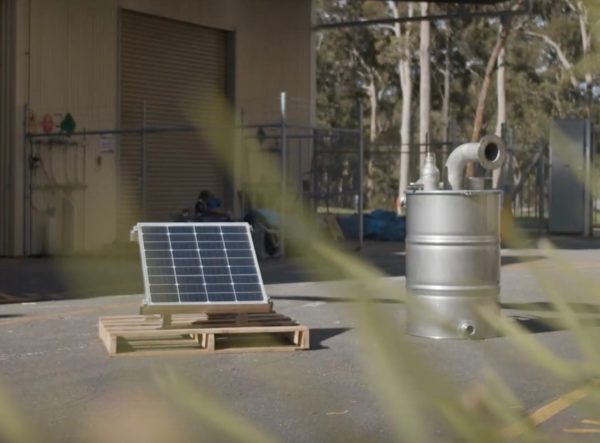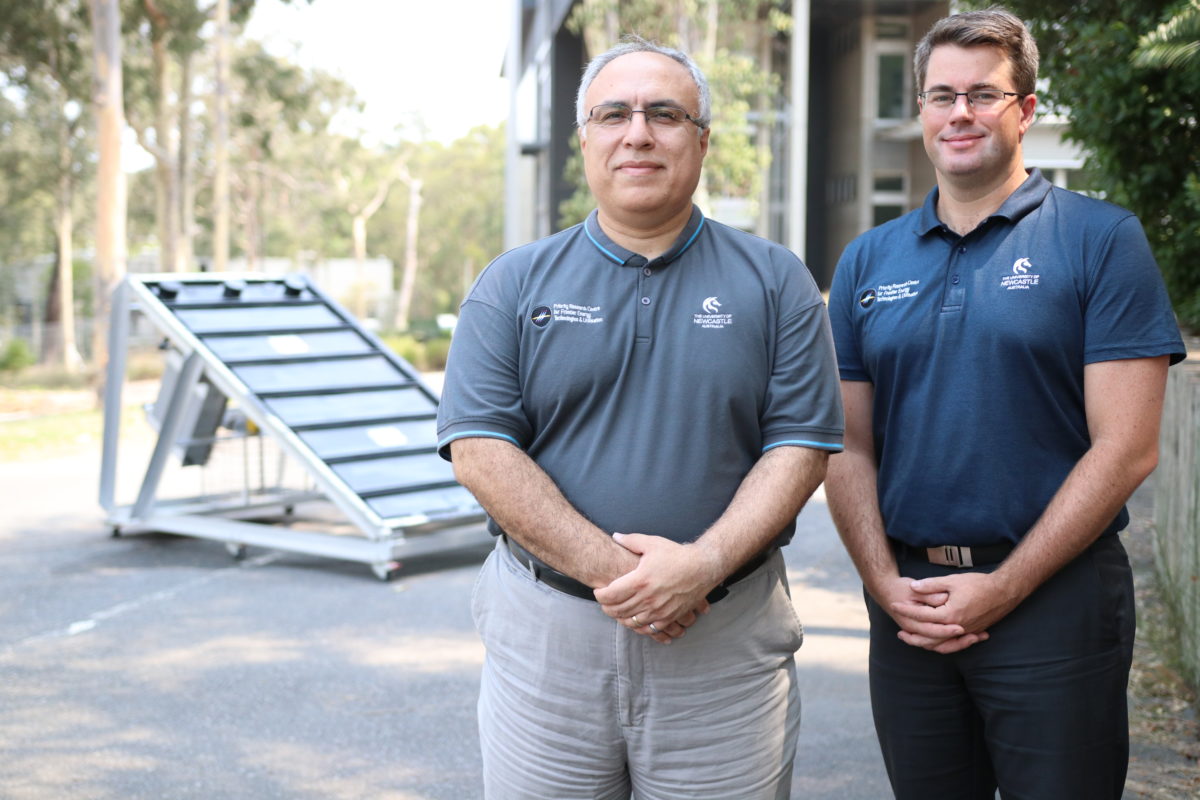“Thousands have lived without love,” begins the famous last line of W. H. Auden’s poem First Things First, “not one without water.” The great poet must’ve been in a practical mood that day, and researchers at the University of Newcastle must be in a practical mood every day as they look to solve the problem of global water shortage by extracting potable water from the air using solar-powered technology.
“By 2025, it’s estimated that 1.8 billion people will live in regions with absolute water scarcity,” said Professor Moghtaderi, who is leading the Hydro Harvester project at the University of Newcastle’s Institute for Energy and Resources (NIER). The Hydro Harvester, an atmospheric water generator (AWG) that innovatively utilises solar thermal energy to extract drinkable water from air at less than five cents per litre.
The Hydro Harvester project has recently been awarded $330,000 from the NSW Physical Sciences Fund to ready a prototype for commercial trial. The funding brings Moghtaderi and his team another step closer to developing an accessible, renewable, and economical solution to the global water shortage crisis.

“We believe atmospheric water generation is part of the solution,” said Moghtaderi. “At any given time there is enough water in the atmosphere to meet the needs of the world’s population for one year.”
The Hydro Harvester works by absorbing water from the air. At night it does this by using silica gel, and during the day, solar energy or waste heat is used to produce hot, humid air (obviously the more hot and humid the more water the air holds). This air is then cooled with ambient air and in the resultant heat sink water is extractable for potable human consumption or indeed irrigation.
Of course, there are AWGs commercially available already. However, the Hydro Harvester is different because it works by heating the air rather than cooling it as refrigeration-based AWGs do. This is the key innovation of the project because this heat can be generated with solar energy, something which is unlikely to be scarce in a place short of water. Moreover, by using solar-generated energy the Hydro Harvester is incredibly economical and employable anywhere.
“By using solar thermal energy or waste heat, the Hydro Harvester has a lower electrical demand and lower average cost of water per litre than commercial atmospheric water generators,” Moghtaderi said.
Refrigeration-based AWGs, which work by cooling the air to form condensation, require more energy and have a range of use limited by temperature and humidity. The Hydro Harvester, with its solar generation, has no such limitations. “Our technology is designed to operate independent of the ambient temperature and humidity, so it’s suitable in virtually any environmental condition, and is cheaper to run.”
Drought and water shortages are a perennial problem around the world and, of course, at home in Australia. However, as the effects of climate change exacerbate conditions, water scarcity is only going to worsen. However, as these researchers at the University of Newcastle are showing, not only is solar energy a curative to climate change, it can also play a large role in the treating of its symptoms. “Thousands have lived without love, not one without water.”
This content is protected by copyright and may not be reused. If you want to cooperate with us and would like to reuse some of our content, please contact: editors@pv-magazine.com.









2 comments
By submitting this form you agree to pv magazine using your data for the purposes of publishing your comment.
Your personal data will only be disclosed or otherwise transmitted to third parties for the purposes of spam filtering or if this is necessary for technical maintenance of the website. Any other transfer to third parties will not take place unless this is justified on the basis of applicable data protection regulations or if pv magazine is legally obliged to do so.
You may revoke this consent at any time with effect for the future, in which case your personal data will be deleted immediately. Otherwise, your data will be deleted if pv magazine has processed your request or the purpose of data storage is fulfilled.
Further information on data privacy can be found in our Data Protection Policy.